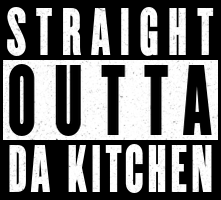
Beginner Pickleball Strategy: A Guide to Success on the Court
Share
If you're new to pickleball, you've likely fallen in love with the fast-paced, social, and fun nature of the game. However, like any sport, mastering pickleball takes time and practice—especially when it comes to strategy. While pickleball is often seen as easy to learn, developing solid strategies early on will help you improve faster and win more games.
In this post, we’ll explore some basic strategies to help beginner players improve their game, focusing on positioning, shot selection, and communication. Let’s dive in!
1. Master the Ready Position
In pickleball, maintaining a proper ready position is key to quick reaction and efficient movement. Here's what to focus on:
Stay balanced: Bend your knees slightly and keep your weight on the balls of your feet.
Paddle up: Always keep your paddle up and in front of you, so you're ready to hit at a moment's notice.
Positioning: When you're at the net (the kitchen), be prepared for quick volleys. When you're at the baseline, be ready to move forward.
The ready position gives you the best chance to react to your opponent’s shots and adjust as needed.
2. Control the Kitchen Line
One of the most important strategies in pickleball is controlling the kitchen (or no-volley zone) line. Here’s why:
Dominating the kitchen line allows you to execute quick volleys and keep your opponents on the defensive.
When both you and your partner move up to the kitchen, you shrink your opponent's target area, making it harder for them to find open court space.
However, be cautious of dinks (soft, short shots) that land just over the net in the kitchen. Practicing your dinks is essential for both offense and defense.
As a beginner, one of your top goals should be to reach the kitchen line after each serve and return. This will put pressure on your opponent and give you more control over the point.
3. Develop a Consistent Serve
In pickleball, the serve is critical because it’s the only time when you’re fully in control of the ball. Beginners should focus on two aspects:
Accuracy: Aim for deep serves that land near the baseline of your opponent's court. A deep serve forces them to stay back, giving you more time to approach the kitchen line.
Consistency: Instead of trying to hit aces or tricky serves, prioritize keeping your serve in play. This puts the ball in motion and keeps the pressure on your opponent to return it.
Don’t stress about power at first—focus on developing a consistent serve that gets the point started smoothly.
4. Use Dinks to Control the Pace
Dinking is a critical part of pickleball strategy, especially for beginners. Dinks are soft, controlled shots that land in your opponent’s kitchen, forcing them to move up and disrupting their rhythm. Here’s how to use dinks effectively:
Patience: Dinking is about control, not power. Focus on placing the ball in tough spots for your opponent, like near their feet or at sharp angles.
Set up the attack: After a series of dinks, look for an opportunity to hit a more aggressive shot when your opponent leaves an opening.
Stay low: When dinking, bend your knees and keep your paddle low to maintain control and avoid popping the ball up.
As a beginner, mastering the dink will give you a huge advantage, as it helps neutralize opponents who rely on power shots.
5. Communicate with Your Partner
In doubles pickleball, communication is vital to success. Without good teamwork, even skilled players can struggle. Here are a few tips:
Call your shots: Let your partner know when you're taking a ball, especially when it’s between you both. A simple “Mine!” or “Yours!” can prevent confusion and missed opportunities.
Move as a unit: Whether you're moving toward the net or back to the baseline, try to stay in sync with your partner. This prevents leaving large gaps in the court for your opponents to exploit.
Encouragement: Support your partner, even after mistakes. Pickleball is a game of momentum, and positive communication keeps the energy up and helps avoid frustration.
Learning to communicate well with your partner will improve your gameplay and make pickleball more enjoyable.
6. Mix Up Your Shots
A predictable game is easy to beat. As a beginner, it's important to start developing a variety of shots:
Third Shot Drop: After the serve and return, try to hit a soft, high-arc shot (called a drop) that lands in your opponent’s kitchen. This allows you and your partner to approach the kitchen line.
Lobs: If your opponent is crowding the net, hit a high lob over their head to push them back and reset the point.
Volleys and Smashes: When you're at the net, be ready to hit aggressive volleys or smashes if your opponent leaves the ball up high.
By mixing up your shots, you keep your opponents guessing and create more opportunities to win points.
7. Stay Patient and Have Fun
Pickleball is a fast-growing sport because it’s fun, social, and accessible to all skill levels. As a beginner, focus on enjoying the game while gradually improving your skills. Keep practicing and be patient with yourself as you learn new strategies.
Remember, pickleball is not just about power; it's a game of placement, precision, and smart decision-making. Stick to these beginner strategies, and you’ll soon find yourself winning more points and feeling more confident on the court.
Final Thoughts
By mastering these beginner strategies, you’ll be well on your way to enjoying the game at a higher level. From controlling the kitchen to communicating with your partner, these tips will help you become a more consistent and strategic player. Get out there, practice, and most importantly, have fun!
Ready to up your pickleball game? Check out our latest pickleball accessories and apparel at Straight Outta Da Kitchen for gear that’ll keep you looking sharp on the court!
